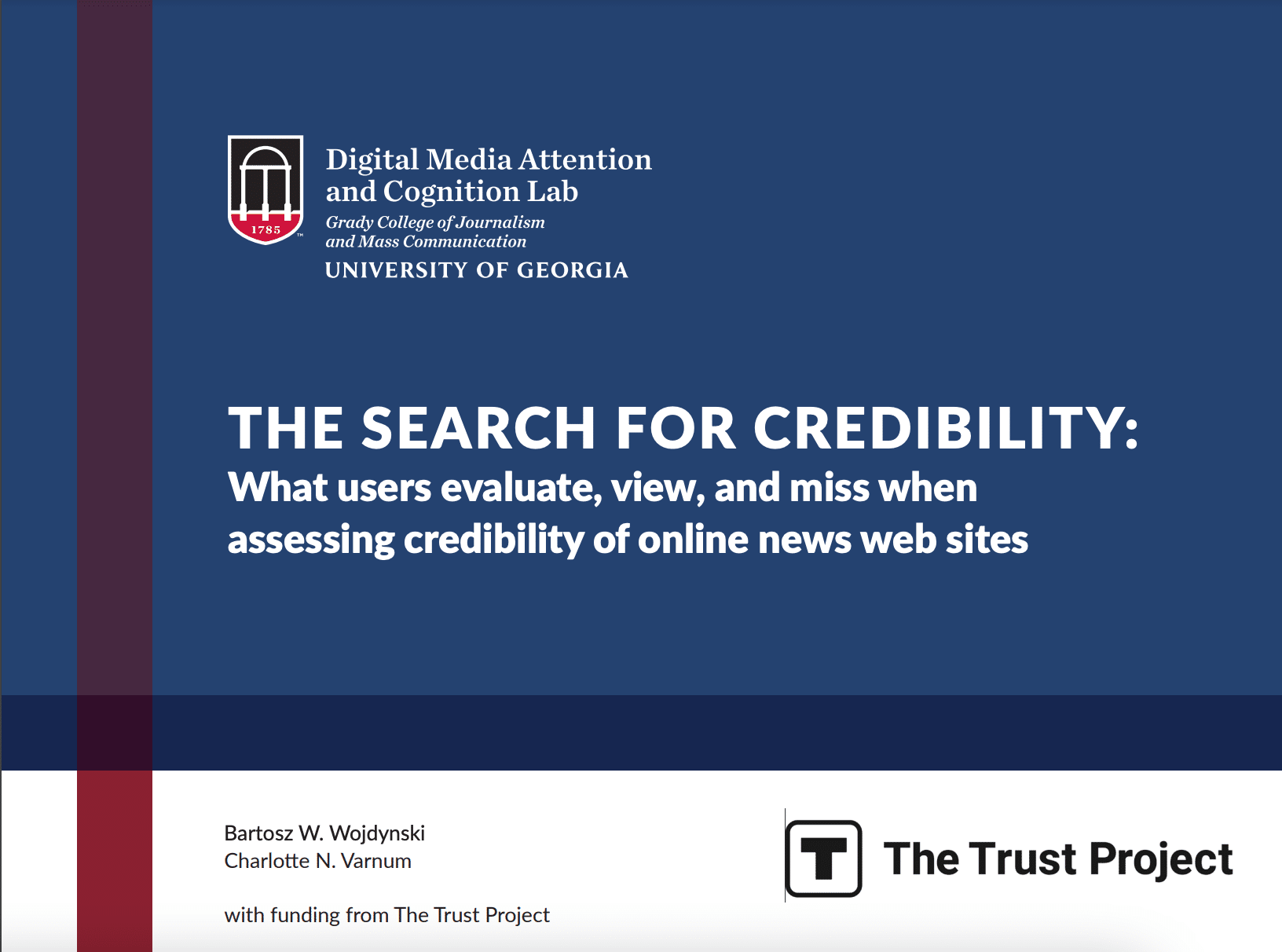News Skeptics, Who are Most Vulnerable to Misinformation and Disinformation, Most Positively Affected
Journalistic transparency elements are both read by users and significantly strengthen credibility and trust in news, according to groundbreaking eye-tracking research by the University of Georgia’s Digital Media Attention and Cognition (DMAC) Lab, the Trust Project® and DMAC announced.
According to Reuters’ 2023 Digital News Report, trust in news fell by two percent across all markets in the last year, leaving a staggering 56% of people worried about distinguishing real news from fake news on the internet. In the quest to repair this erosion of trust, educating the public on how to identify credible sources and fostering a well-informed citizenry is paramount.
“In a landscape where much of the existing research serves only to highlight the loss of trust in news media and the rampant spread of misinformation, this study reveals tangible, research-backed solutions,” said Sally Lehrman, founder and CEO of the Trust Project. “This study equips news organizations with actionable insights to fortify their credibility and empower the public to distinguish fact from falsehood. We already knew the Trust Project’s 8 Trust Indicators® work. This study furthers our ability to use them to build the public’s capacity to resist misinformation and strengthen informed participation in civic life.”
The in-person eye-tracking experiment, led by DMAC Lab Director Bart Wojdynski and researcher Charlotte Varnum, was conducted to better understand how people interact with the Trust Project’s Trust Indicators® in online news articles. The study, which examined how users form credibility assessments, used eye-tracking to combine several measurements of visual attention to elements on article pages and page browsing across the entire site. Each participant also answered a series of questions. In a landscape where much of the existing research serves only to highlight the loss of trust in news media and the rampant spread of misinformation, this study reveals tangible, research-backed solutions:
- Mainstream News Skeptics Most Affected: The study found that mainstream news skeptics, often the most vulnerable to misinformation, experienced the most positive impact and spent the most time reviewing policies and procedures.
- Best Practices and Journalist Expertise Emerge: Visual attention to disclosures about ethics, ownership, funding and other standards (Best Practices) was a significant predictor of perceived news site credibility and value. Study participants spent the most time with information about the journalist, followed by Best Practices.
- Design Matters: The way transparency elements and labels are designed – especially their prominence on the page – played a crucial role. Making them more noticeable and accessible can enhance their impact.
“Given the growing importance of news audiences being able to assess the credibility of information from a variety of sources online, these findings show that different journalistic transparency efforts can reach different audience members, and lead to greater perceptions of not just credibility, but news value,” said Wojdynski.
To review the full report, please visit: The Search for Credibility: What users evaluate, view, and miss when assessing credibility of online news web sites
More about the University of Georgia’s College of Journalism and Digital Media Attention and Cognition Lab
The University of Georgia’s College of Journalism and Digital Media Attention and Cognition Lab is at the forefront of research exploring how people process and understand information in the digital age. Their interdisciplinary team conducts innovative research aimed at enhancing
media literacy and promoting the responsible consumption of news and information. For more information, please visit: http://dmaclab.com/.
